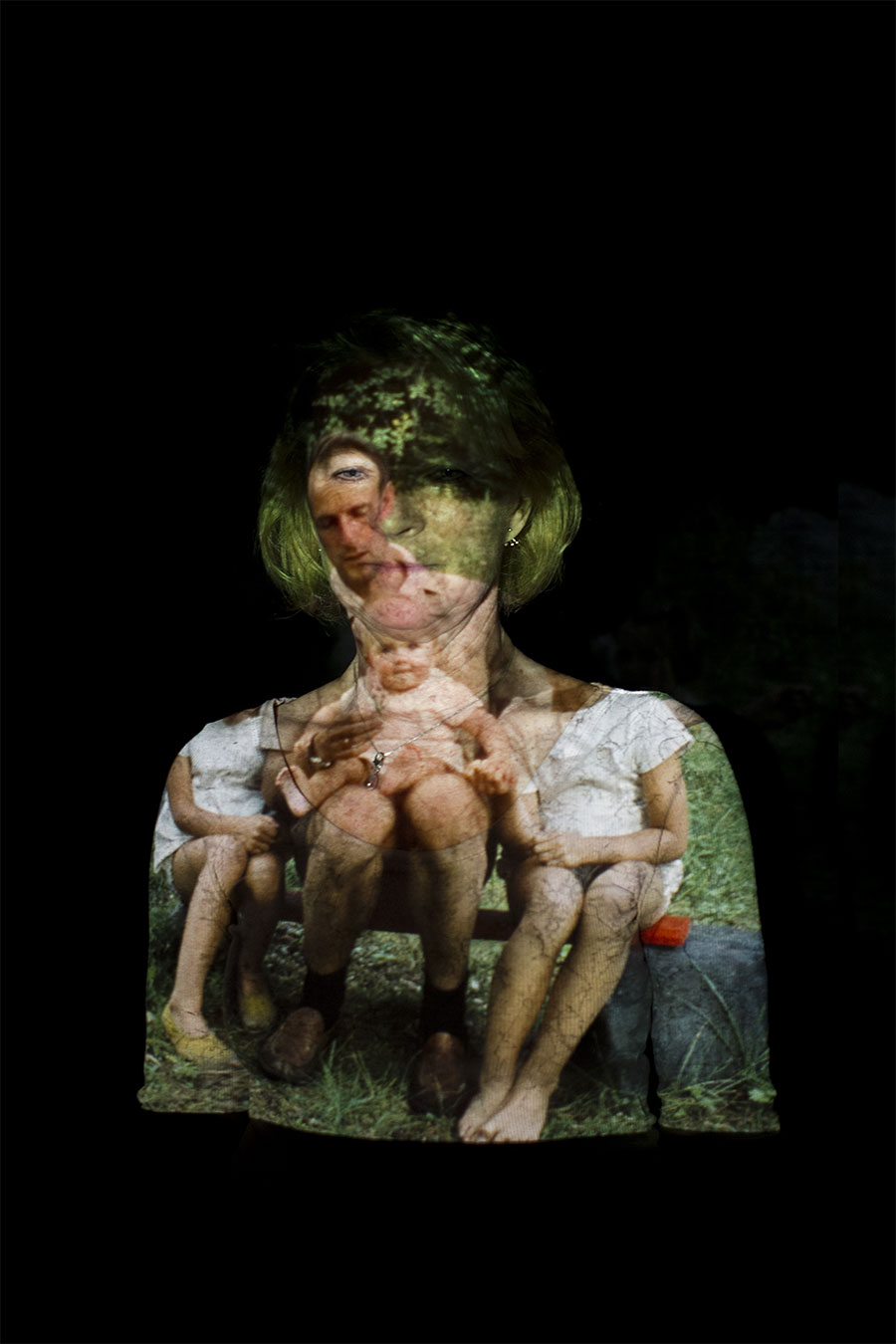I’m captivated by Rebecca Simon’s Letters from the Past project.
The moment that stopped me dead was the juxtaposition of a caught fish supping at the air, dying, with the grandfather feeding his granddaughter a bottle of milk.
It is heartbreakingly raw and reveals how powerful combining or simply bringing close two otherwise mundane images from a family album can be.
Simon’s project is both multi-media (projection/documents (letters of apparent contrition/excuses)/video/photography and installation) and multi-platform (education workshop/exhibition/film).
Its subject is intra-familial sexual abuse, particularly grandfather-granddaughter abuse.
The use of projection of family images of seemingly happy moments upon the survivors of abuse is especially effective and challenging.
The projections are a form of visual scarring of memory upon the body.
They also set up an imposed viewpoint, of the wider family and the world at large perhaps, of ‘happy memories’ superimposed on the surface of a person. It is what those around our survivors prefer to remember. Perhaps survivors too prefer to acquiesce – at least in part, or at certain times – to such a projection to avoid the immense pain of what lies beneath.

The images of gasping fish continues to haunt through the physical exhibition space.
The letters – printed on see-through perspex – from the abusers dangle from above on fish hooks. The words of the letters occasionally sparkle in the light from the projections, shadows of the words move across the screens behind. The words within the letters – excuses, apologies or whatever, are bait. We – like the the granddaughters – are the fish.
Like the projections themselves, the dangling documents hide potential threat and visceral harm.
She has, in Allan Sekula’s words, brought both the role of “witness” and “seer” to the project.
In the final video of the exhibition, the ambiguity of feelings and memory is shockingly summarised when the interviewee says tearfully that she missed her grandfather on a recent occasion when she was skiing.
She then explains her struggle to forgive her abuser.
“But I just cannot forgive,” she says. “I cannot forgive and neither can you.
“No matter how much we talk and try to make sense of it, and give it a place, it is still there.
“It was your fault and you passed responsibility onto us. You escaped through your letters and your excuses.
“You escaped into your depression and your paranoia. You then escaped into your dementia and finally into death.”

Simon’s body of work is challenging me in my own Other Mothers work.
Where in my project is the ‘space’ for the viewer to ‘be’, to ‘respond’ to project themselves into the work?
Simon has created a space that is subtle, multi-dimensional and, while it starts with young children and ends in a funeral, the overall flow is not strictly linear. It punctuates and evokes over its perceived flow of time.
I’m very aware the my own work is overly linear at present and lacking a clear, or meaningfully unclear, route from beginning to end.
References
lettersfromthepast.nl. (n.d.). The Project. [online] Available at: https://lettersfromthepast.nl/the-project
Sekula A. (1982) On the Invention of Photographic Meaning. In: Burgin V. (eds) Thinking Photography. Communications and Culture. Palgrave, London.
othermothers.photography. (n.d.). Other Mothers – Falmouth University Final Major Project by Laurence Cawley.




